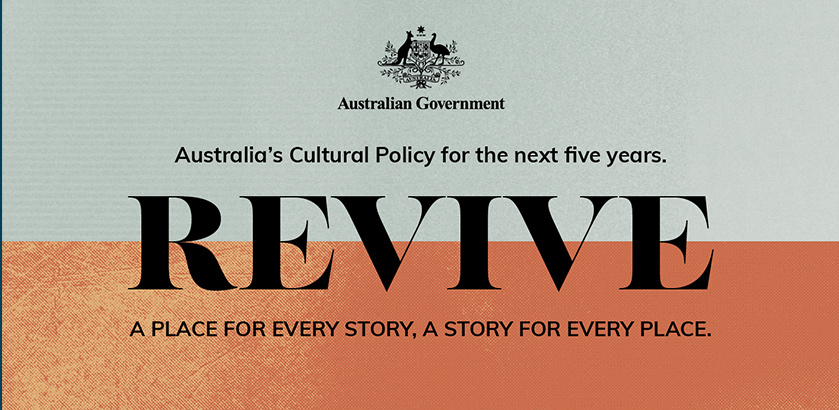Revive – Australia’s new cultural policy
The Federal Government’s new arts and cultural policy “Revive – A Place for Every Story, A Story for Every Place” establishes a five-year time frame to achieve significant change across five policy pillars:
- First Nations First;
- A Place for Every Story;
- Centrality of the Artist;
- Strong Cultural Infrastructure; and
- Engaging the Audience.
Impacts on regional Australia
The Federal Government’s new ‘Revive’ policy provides $8.5 million in increased support for regional arts and culture through a boost to the Regional Arts Fund and a continuation of the Festivals Australia Program.
Regional Capitals Australia welcomes this investment particularly given our long-standing advocacy for the arts sector to be better supported by the Australian Government. This policy reflects the need to invest in regional stories and specific regional funding to be increased.
‘Revive’ also provides a commitment to share the national collection by establishing a program of long-term loans of works from the National Gallery of Australia’s collection to regional cultural institutions.
Other notable commitments in Revive that are relevant to regional Australia include:
- Deliver improvements to the National Broadband Network and regional connectivity to improve digital inclusion, and social and economic opportunities for all Australians.
- Continue collaboration with the arts and cultural sector to deliver on the national visitor economy strategy, THRIVE 2030, by supporting artistic and cultural events and incorporating cultural assets into destination marketing and campaigns.
- Increase support for community broadcasting to deliver local news, tell local stories, and provide a platform for diverse voices and Australian music.
What is missing?
In regional Australia, arts and culture help to shape the character of our communities and are an important expression of regional life. Importantly, as more people move to the regions, the liveability value of a vibrant arts sector plays a major role in attracting and retaining people who move to regional capitals.
Funding for arts and culture in Australia needs to better align with the post-Covid population distribution and fairly recognise the almost eight million residents of regional Australia.
Regional Capitals Australia (RCA) endorses the recommendation by the 2021 Australian Infrastructure Plan to capture, measure and assess the quadruple bottom-line benefits of social infrastructure including arts and culture and use this framework to collaboratively plan, develop and invest in arts and cultural infrastructure.
While the ‘Revive’ policy commits to investing in local arts and cultural infrastructure across Australia, there was no dollar figure attached to this commitment and the Minister indicated that additional funding and details could potentially be forthcoming in the May Federal Budget.
Currently, a disproportionate burden of regional arts and cultural infrastructure falls on the shoulders of local government, in comparison to their metro counterparts. However while these facilities are funded by the ratepayers of regional capitals they are utilised heavily by a significantly greater population of outlying communities in the wider region.
For example, analysis conducted by the City of Bunbury on visitation to the Bunbury Regional Art Gallery estimated that only approximately 26 per cent of visitors to the gallery were residents of the City of Bunbury, the remaining visitors were from the wider region and even further afield. The Bunbury Regional Art Gallery is solely owned, funded and operated by the ratepayers of the City of Bunbury.
Unfortunately, the funding capacity of regional local government is limited by their smaller rate base, rate caps and broader service provision to their residents in challenging regional environments.
Our call to action
RCA continues to advocate that investment in arts and cultural infrastructure for regional Australia should be a major priority for the arts portfolio in the forthcoming May Budget, including a more equitable distribution of arts funding that better reflects the population growth of regional Australia.
